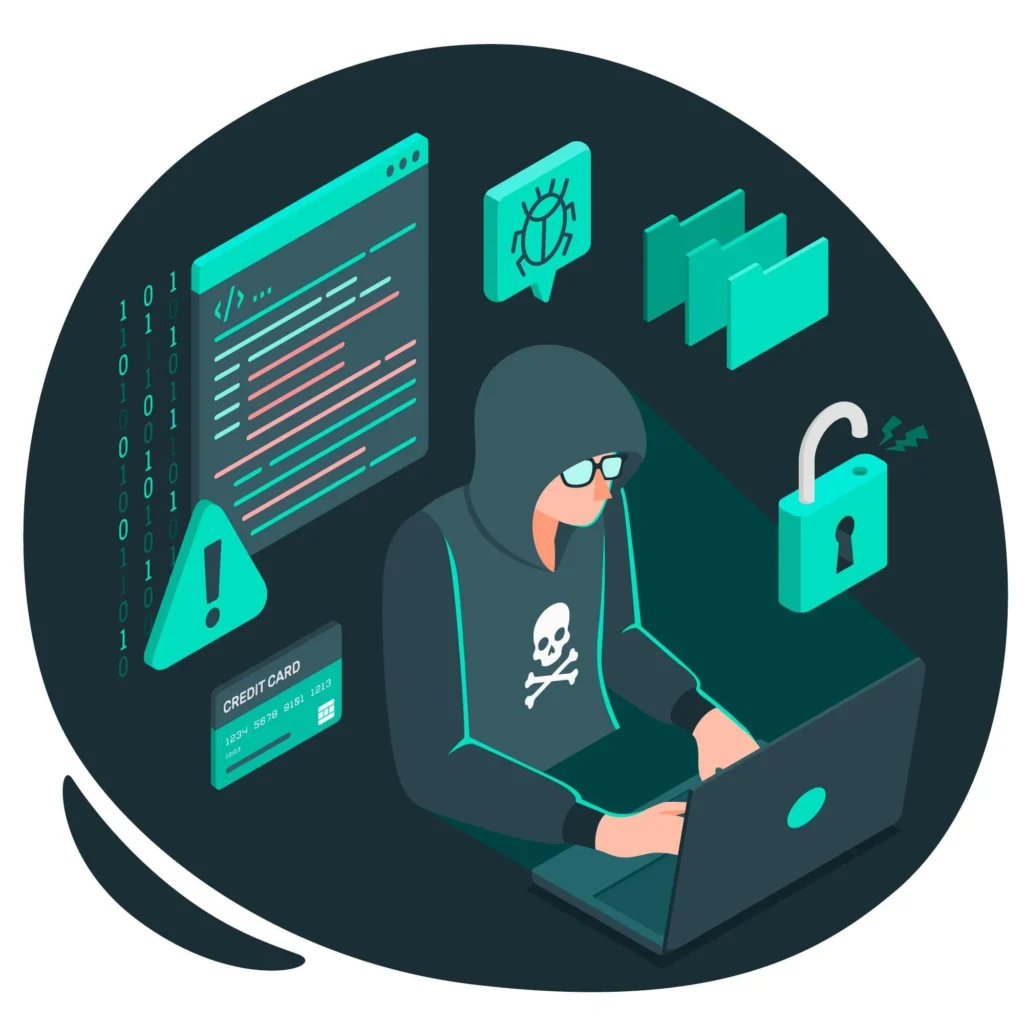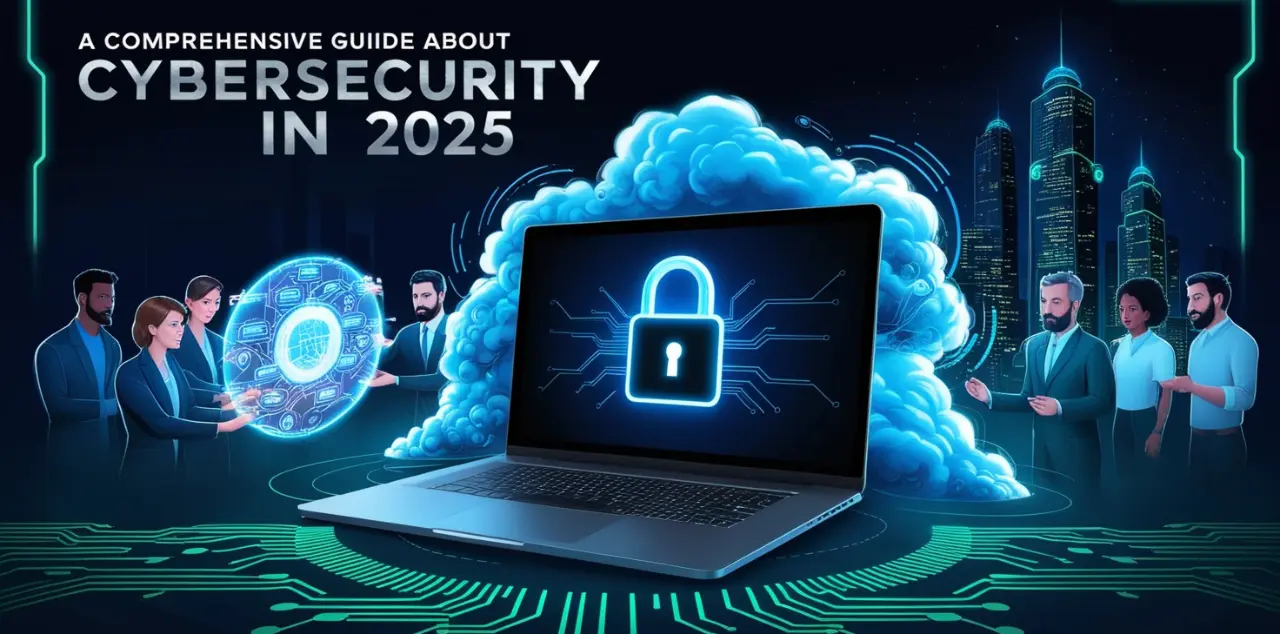Cybersecurity involves the protection of computers, servers, mobile devices, networks, and data from harmful attacks. Commonly known as information technology security or electronic information security, it is vital for safeguarding sensitive information and ensuring smooth operations. For individuals, businesses, and organizations, cybersecurity is crucial for defending against threats, preventing data breaches, and maintaining system integrity. As cyberattacks become more frequent and sophisticated, investing in robust cybersecurity measures is more important than ever.
Key Types of Cybersecurity
Network security:
The practice of safeguarding a computer network from targeted attacks and opportunistic malware. It is essential for preventing unauthorized access and ensuring that sensitive data remains secure during transmission and storage. With effective network security measures, organizations can protect their infrastructure, maintain data integrity, and reduce the risk of cyber threats. In today’s digital landscape, network security is critical for keeping private and confidential information safe from evolving cyber risks.
Application security:
It focuses on protecting software and devices from potential threats. A vulnerable or compromised application can expose valuable information, which is why securing applications starts at the design phase, even before deployment. By incorporating security measures early in the development process, businesses can prevent vulnerabilities, mitigate risks, and ensure their applications remain secure throughout their lifecycle. In an increasingly digital world, strong application security is essential for protecting sensitive data and maintaining user trust.
Information security:
It focuses on protecting the integrity and privacy of data, whether it’s stored on a device or transmitted over a network. By adopting strong information security services, both businesses and individuals can guard against data breaches, unauthorized access, and various cyber threats. Effective information security helps ensure that sensitive information stays protected, fostering both privacy and trust. In today’s digital world, robust information security practices are vital for keeping data safe from increasingly sophisticated attacks.
Operational security:
Encompasses the processes and procedures used to manage and safeguard data. This includes making key decisions regarding user permissions, data storage, and establishing guidelines for data sharing. By applying effective operational security measures, organizations can guarantee that sensitive information is accessible only to authorized users and is stored and shared securely. Operational security is a critical element of a comprehensive security strategy, helping to mitigate the risk of data breaches and unauthorized access to valuable information.
Disaster recovery and business continuity:
two vital aspects of an organization’s approach to cybersecurity incidents. Disaster recovery policies concentrate on restoring lost data and operations following a breach or disruption, allowing businesses to bounce back quickly and minimize downtime. Conversely, business continuity strategies ensure that essential functions continue to operate, even during unforeseen disruptions. Together, these practices enable organizations to maintain resilience, lessen operational impact, and secure long-term stability in the face of cybersecurity challenges.
End-User education:
People are often the weakest link in cybersecurity, which makes End-user education vital for preventing cyber threats. By teaching users how to spot and avoid phishing emails, suspicious attachments, and unsafe online behaviors, businesses can greatly lower the chances of malware infections. Equipping employees with the skills to recognize potential threats enhances the overall security framework, safeguarding sensitive information and lessening the effects of cyberattacks. End-user education is a key component of a well-rounded cybersecurity strategy, promoting a culture of security awareness within the organization.
Common Cybersecurity Threats
The landscape of cyber threats is extensive and constantly evolving. Here are some of the most prevalent cybersecurity threats that both businesses and individuals encounter today. Identifying these threats is the first step in crafting a proactive defense strategy to protect sensitive information and ensure secure systems. Being aware of these risks enables organizations to take appropriate measures and implement effective security protocols to minimize potential vulnerabilities.

Malware:
Malware refers to harmful software that is created to damage or disrupt systems. It can spread through email attachments, downloads, or compromised websites. There are several common types of malware, each with its own malicious intent
Viruses: These are self-replicating programs that spread across systems, often causing significant damage.
Trojans:
This type of malware disguises itself as legitimate software, tricking users into downloading and executing it.
Ransomware:
This malware locks a user’s data and demands payment to unlock it.
Spyware:
It secretly monitors and records user activities to steal sensitive information.
By understanding these threats, both businesses and individuals can take proactive measures to prevent malware infections and safeguard their systems from harm.
Phishing attacks:
It involve deceptive emails that appear to come from trusted sources, tricking users into revealing sensitive information like passwords and credit card details. These fraudulent messages often imitate legitimate communications, making them hard to spot. By clicking on links or attachments in these emails, users can inadvertently give cybercriminals access to valuable data. Knowing how phishing attacks operate and being vigilant about suspicious messages can help safeguard against these prevalent cybersecurity threats.
Man-in-the-Middle attacks:
It occur when an attacker intercepts and modifies communications between two parties without their awareness. This type of attack is frequently used to steal sensitive information, such as login credentials or financial data. By placing themselves between the sender and receiver, the attacker can monitor, capture, or alter the data being exchanged. Understanding how Man-in-the-Middle attacks function is vital for identifying and preventing these threats, ensuring that private communications remain secure and protected from unauthorized access.
Denial-of-service (DoS) attacks:
Inundate a system with excessive traffic, overwhelming it to the extent that it becomes slow or entirely unavailable. These attacks can significantly disrupt business operations, resulting in downtime, lost productivity, and potential financial losses. Being aware of and preparing for DoS attacks is essential for maintaining service availability and reducing their impact on critical operations.
SQL injections:
SQL injection is a method of attack where hackers insert harmful code into SQL queries to take advantage of weaknesses in a database. This can lead to unauthorized access to sensitive information, putting confidential data at risk and jeopardizing the security of an application. It is crucial to identify and address SQL injection threats to safeguard databases and ensure the integrity and confidentiality of the data stored within them.
The Scale of Cyber Threats and Industry response
As cyber threats grow increasingly serious, it is essential for businesses to invest in cybersecurity services to protect their operations. Global spending on cybersecurity is expected to exceed $260 billion by 2026, highlighting the critical need for strong cybersecurity measures. Governments worldwide, including those in the U.S., U.K., and Australia, have created frameworks and guidelines to assist organizations in managing risks and securing their digital assets. The National Institute of Standards and Technology (NIST) provides detailed guidelines, while the National Cyber Security Centre (NCSC) in the U.K. offers best practices for network security and data protection. These initiatives stress the importance of being proactive and implementing effective cybersecurity strategies
Latest threats to watch out for
The cybersecurity landscape is constantly changing. Some of the most recent threats include:
Dridex Malware:
Dridex is a form of malware that targets its victims’ banking information, with the main goal of stealing online account credentials to gain access to their financial assets
Dridex malware operators often target Windows users with phishing email campaigns, hoping to fool individuals into opening attached Word or Excel files. Hidden within these files is the Dridex malware, which — if opened — infects users’ computers and helps the cybercriminals steal their personal information, mainly banking credentials.
Romance Scams:
It involve cybercriminals targeting individuals through online dating platforms, using deceptive tactics to gain their trust and steal personal data and money. These scammers often create fake profiles and establish emotional connections with victims, only to manipulate them into sending money or sharing sensitive information. As romance scams become more sophisticated, it’s crucial for users to be vigilant and cautious when interacting with strangers online to avoid falling victim to these fraudulent schemes.
Emotet Malware:
Emotet Malware is a sophisticated trojan designed to steal sensitive information while also deploying additional malicious software on compromised systems. This makes Emotet a serious threat to both businesses and individuals, potentially resulting in data breaches, financial losses, and the proliferation of other cyber threats. Its capacity to adapt and target different systems adds to its danger, highlighting the necessity of robust cybersecurity measures to protect against Emotet Malware and similar attacks

Cyber Security tips for protecting Yourself and your business
Cyber safety is crucial for protecting both yourself and your business. Here are some key tips to enhance your cyber safety
1. Update Your Software Regularly: Make sure your operating system and applications are always updated with the latest security patches to guard against known vulnerabilities.
2. Use Antivirus Software: Installing trustworthy antivirus software can help identify and eliminate threats before they inflict damage on your systems
3. Create Strong Passwords: Develop complex, unique passwords for your accounts, and activate multi-factor authentication for extra security.
4. Avoid Opening Suspicious Emails: Steer clear of opening attachments or clicking on links from unknown senders, as these could harbor malware or phishing attempts.
5. Be Cautious on Unsecured Networks: Refrain from performing sensitive transactions over public Wi-Fi to protect yourself from man-in-the-middle attacks and other security threats
6. Use Remote Technology Support: If you’re uncertain about cybersecurity best practices, consider seeking assistance from remote technology support to help secure your systems and ensure safe operations.
By adhering to these cyber safety tips, you can greatly minimize your risk of becoming a victim of cyber threats and maintain a secure online presence
Careers in Cybersecurity – Explore Cybersecurity Jobs
As cyber threats continue to evolve, the demand for skilled professionals in the cybersecurity field is increasing rapidly. Whether you’re interested in cybersecurity jobs such as ethical hacking, threat analysis, or network security management, the industry offers a variety of opportunities to build a fulfilling and rewarding career. With the growing importance of securing digital systems and data, pursuing a career in cybersecurity can provide job stability, career advancement, and the chance to make a significant impact in protecting organizations from cyberattacks.
Conclusion:
Cybersecurity is a vital and complicated field focused on safeguarding personal, business, and government data from cybercriminals. Whether you’re aiming to establish a strong security framework for your organization or embark on a career in cybersecurity, it’s crucial to understand the various types of threats and security measures. Collaborating with a knowledgeable cybersecurity services company can offer the expertise necessary to stay ahead of evolving cyber threats and ensure your

